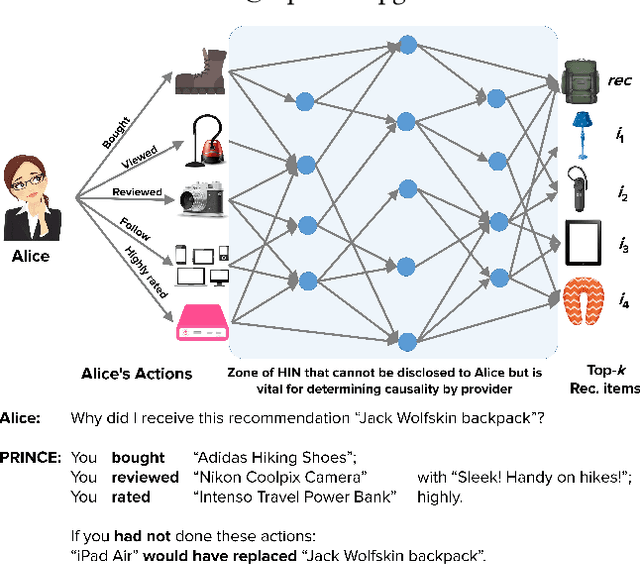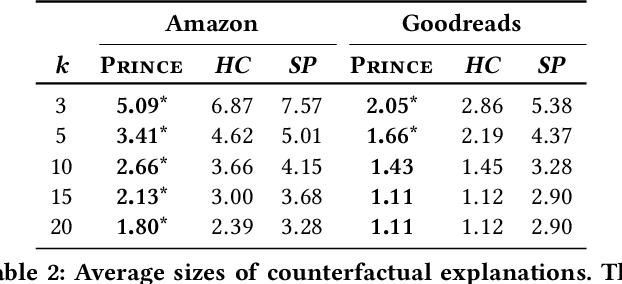PRINCE: Provider-side Interpretability with Counterfactual Explanations in Recommender Systems
Paper and Code
Dec 24, 2019



Interpretable explanations for recommender systems and other machine learning models are crucial to gain user trust. Prior works that have focused on paths connecting users and items in a heterogeneous network have several limitations, such as discovering relationships rather than true explanations, or disregarding other users' privacy. In this work, we take a fresh perspective, and present PRINCE: a provider-side mechanism to produce tangible explanations for end-users, where an explanation is defined to be a set of minimal actions performed by the user that, if removed, changes the recommendation to a different item. Given a recommendation, PRINCE uses a polynomial-time optimal algorithm for finding this minimal set of a user's actions from an exponential search space, based on random walks over dynamic graphs. Experiments on two real-world datasets show that PRINCE provides more compact explanations than intuitive baselines, and insights from a crowdsourced user-study demonstrate the viability of such action-based explanations. We thus posit that PRINCE produces scrutable, actionable, and concise explanations, owing to its use of counterfactual evidence, a user's own actions, and minimal sets, respectively.
 Add to Chrome
Add to Chrome Add to Firefox
Add to Firefox Add to Edge
Add to Edge